After a few months pretty much indoors, staring enviously out windows, we've got to get south of the Alps for some sun.
You
may not find this terribly rewarding unless you're included here, so this is a
good time for casual and random browsers to turn back before they get too caught
up in the sweep and majesty of the proceedings and can't let go.
Verbania and Lago Maggiore in their February finest
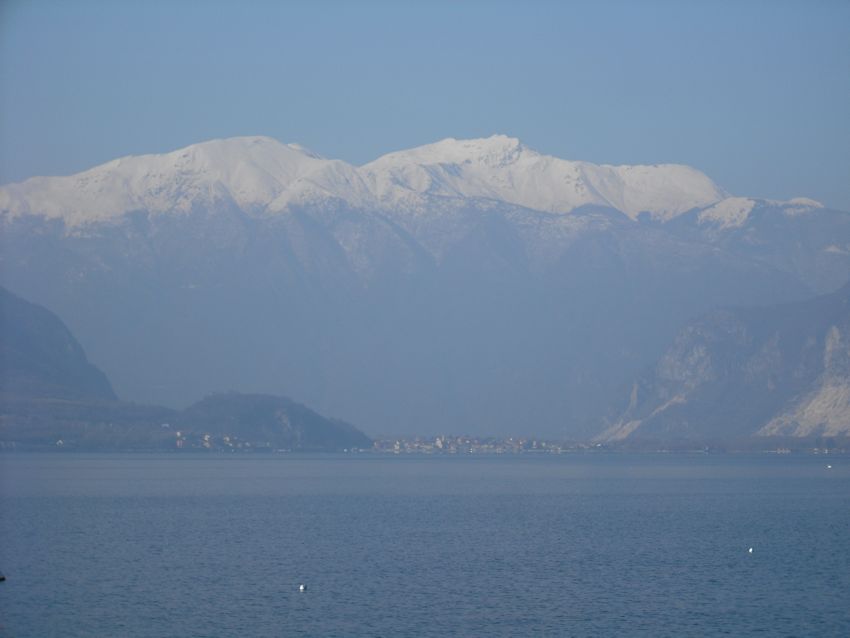
We arrived in Verbania by rail over the Simplon Pass after dark, and we awake to the view out our window. Baveno's on the far side of Lake Maggiore.
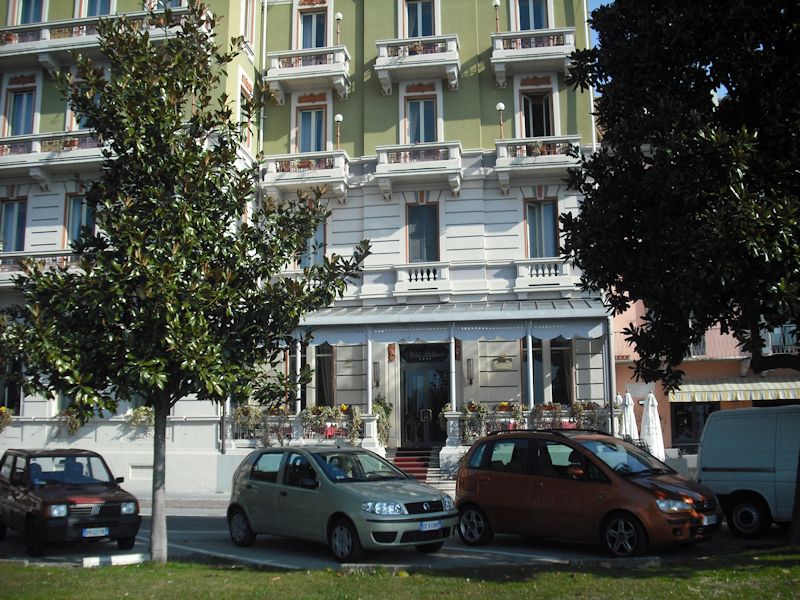
The Hotel Pallanza on the lakeside, off-season rates, nice breakfast, lovely sunlight, and of course Kristin's here. 19 February 2009. [An earlier visit to Verbania, 2005]
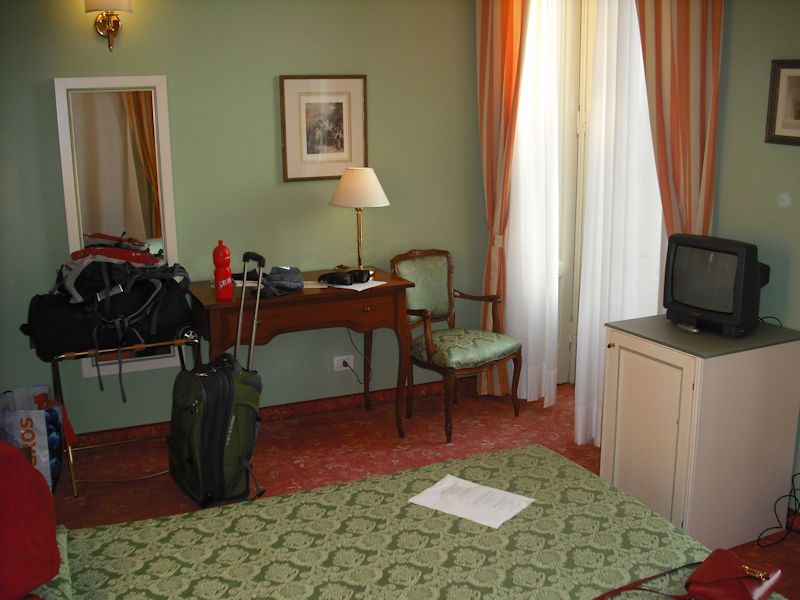
Interiors
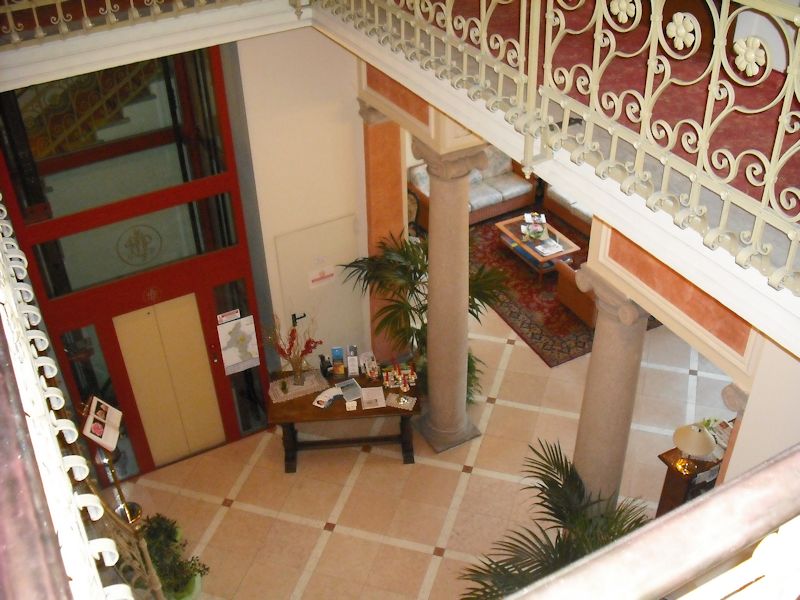
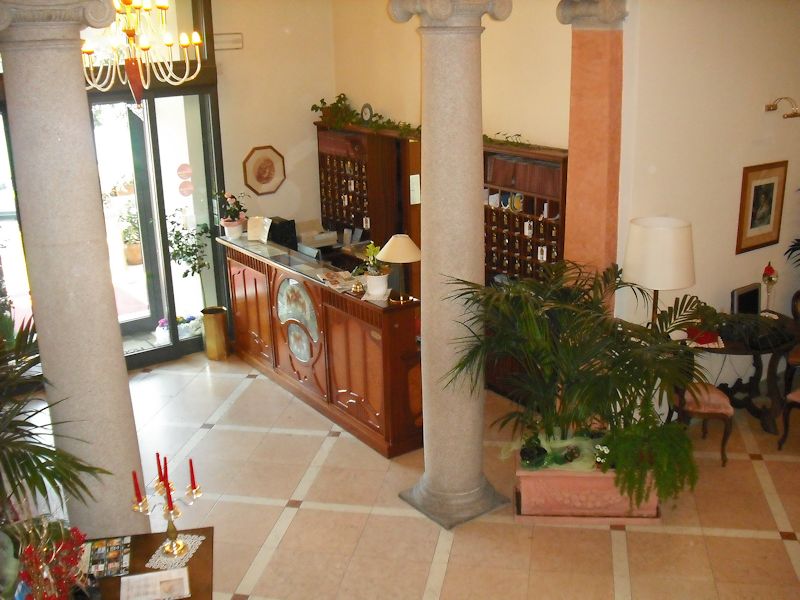
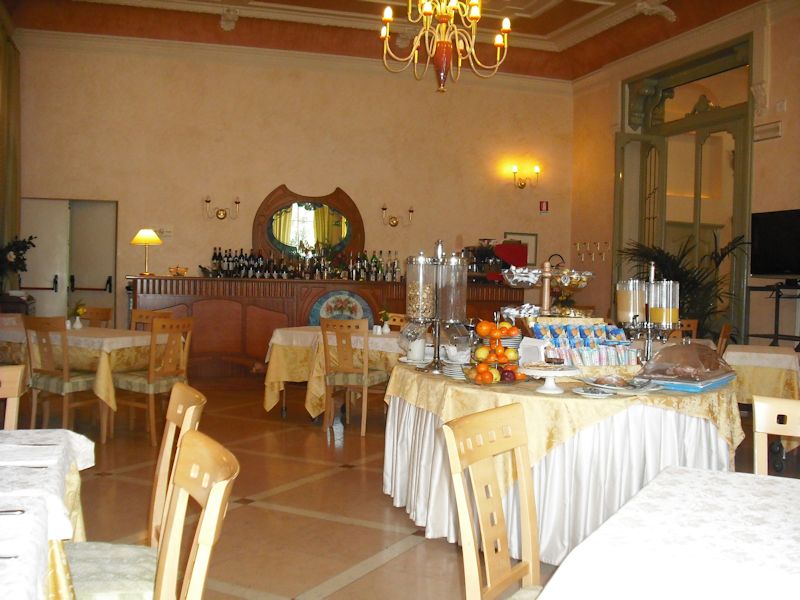
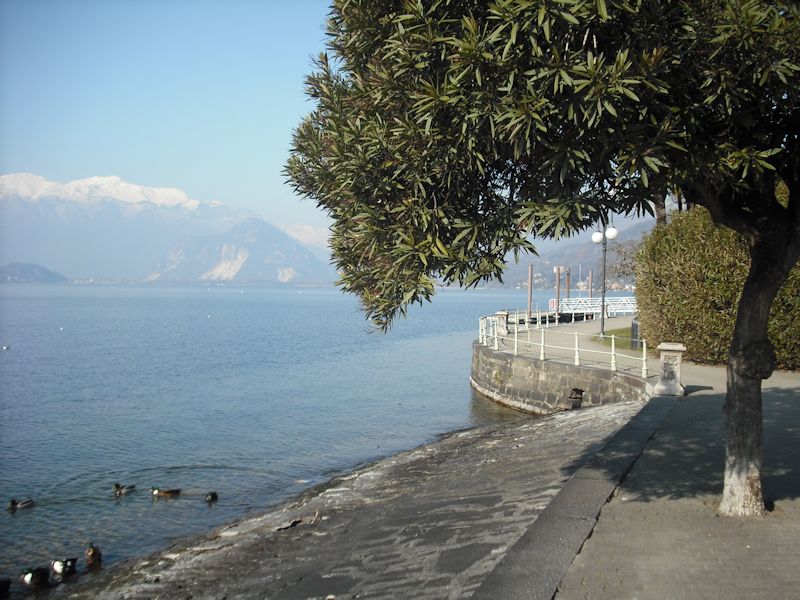
Kristin's come from the Americas and plans to march us all about, regaining strength every day. So here we go.
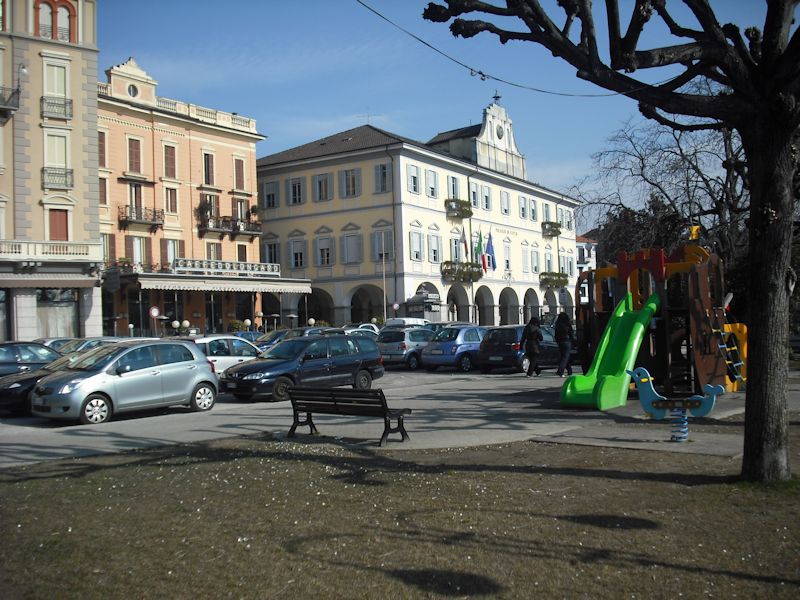
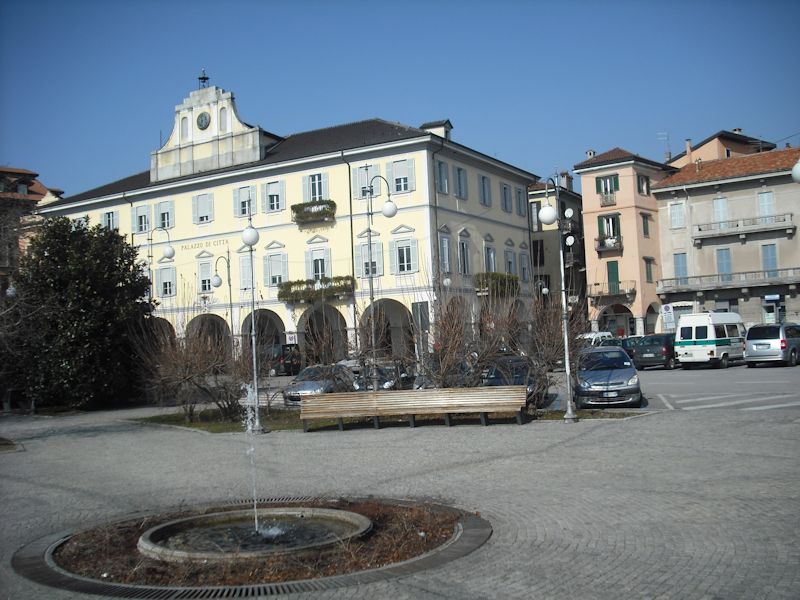
In the right light, Verbania looks like quite an old city, though it was founded in 1939.
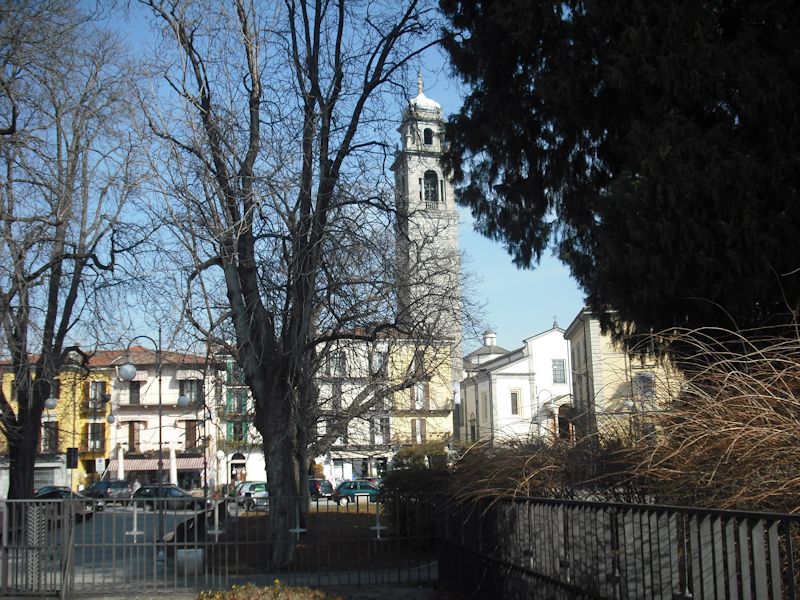
Mind you, it was founded in 1939 (by Mussolini) by combining the existing old towns of Pallanza and Intra. We're in Verbania-Pallanza now, on the western side of the peninsula. But now we're going to walk 4km around the point to Intra -- an interesting challenge these days.
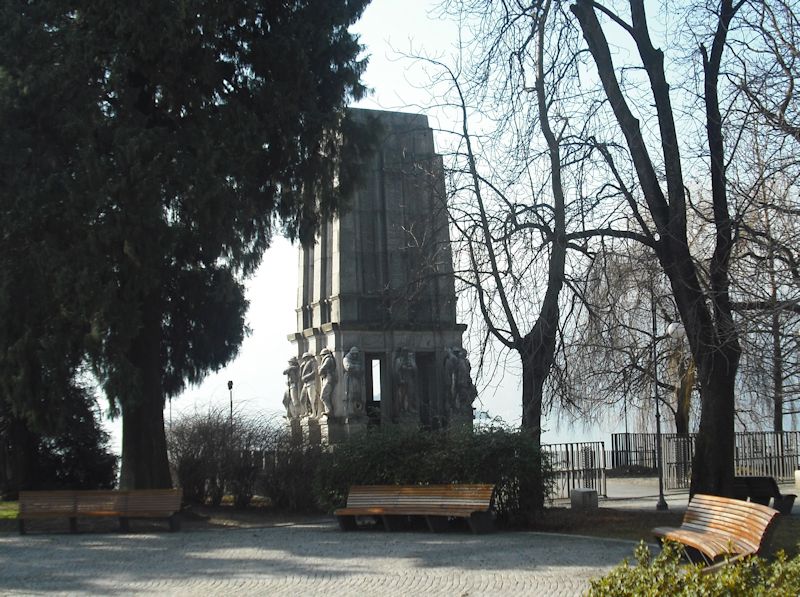
The spirit of Mussolini seems to live on. A monument to the fallen whomevers.
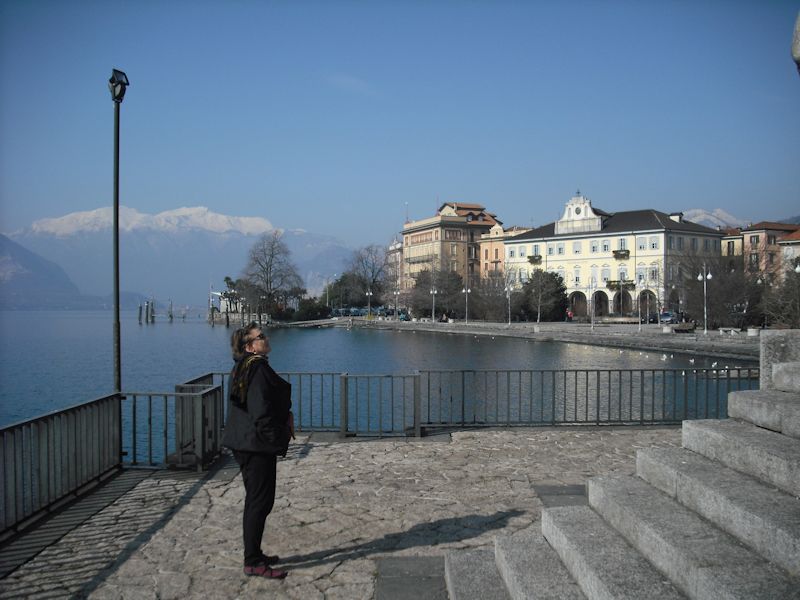
Kristin taken aback for the moment by the monumental grandeur.
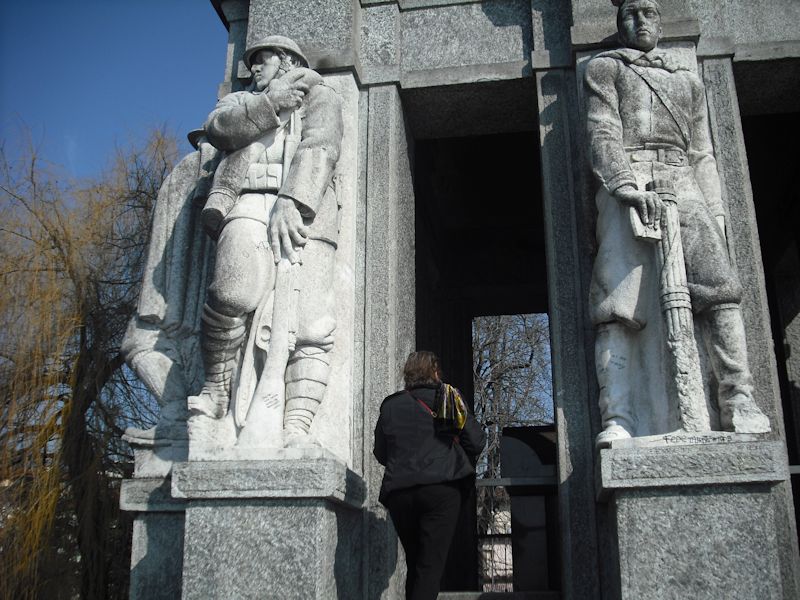
Strangely drawn to be part of all this Robust Heroism
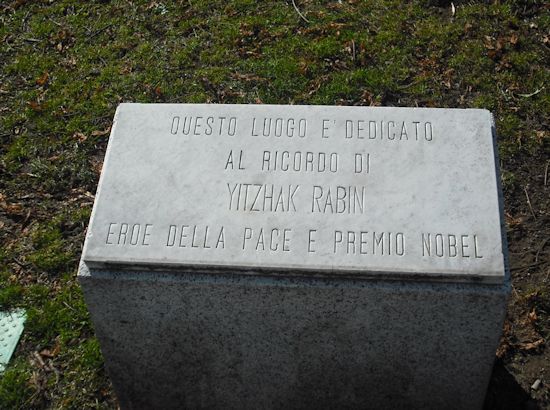
A post-Mussolini monument not far away, near the public toilets

A glance back at the Pallanza city hall (with the arcades), as we set off eastward for the ferry docks of Intra.
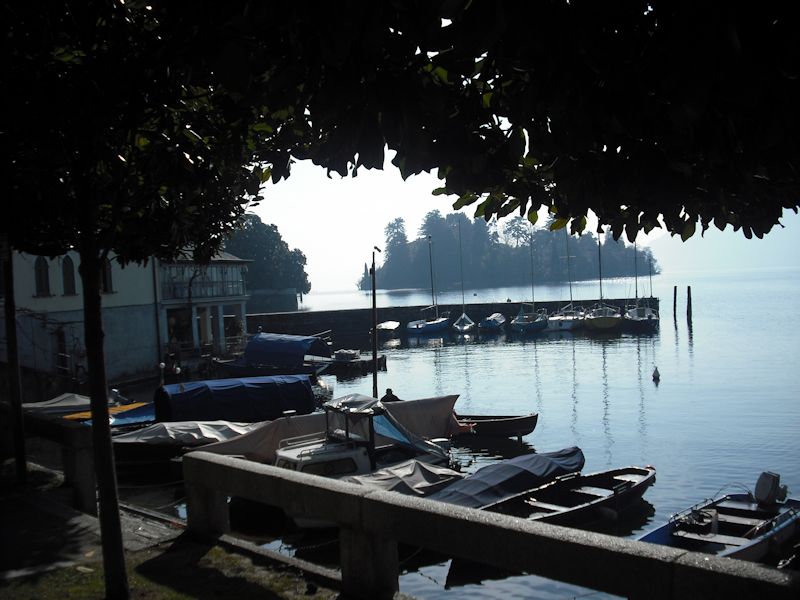
Boats on the western side of the Pallanza peninsula. There's a very nice corniche all the way round, a coastal road half marked off for walkers, joggers, and cyclists, between the water's edge and the steep hillsides leading up to the famous Villa Taranto and its botanical gardens.
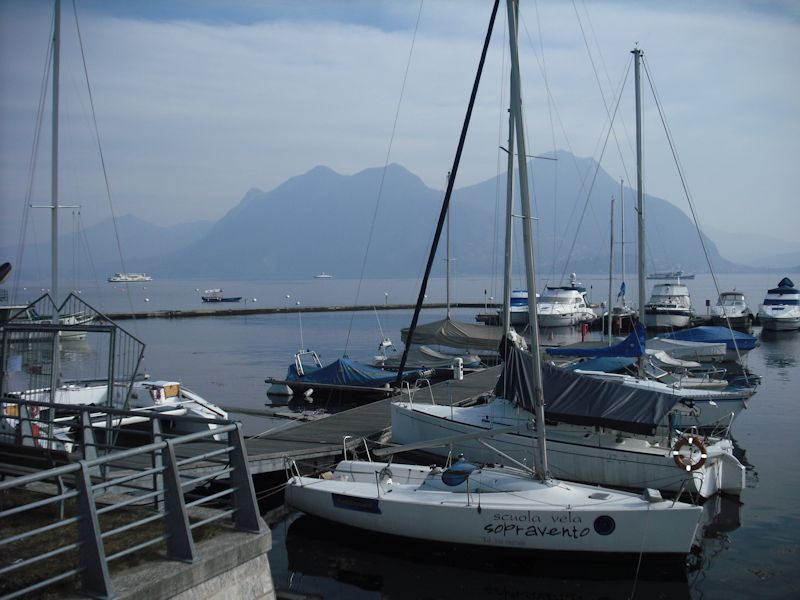
Boats on the eastern side of the Pallanza peninsula. We're well on our way to Verbania-Intra now and contemplating a boat ride.
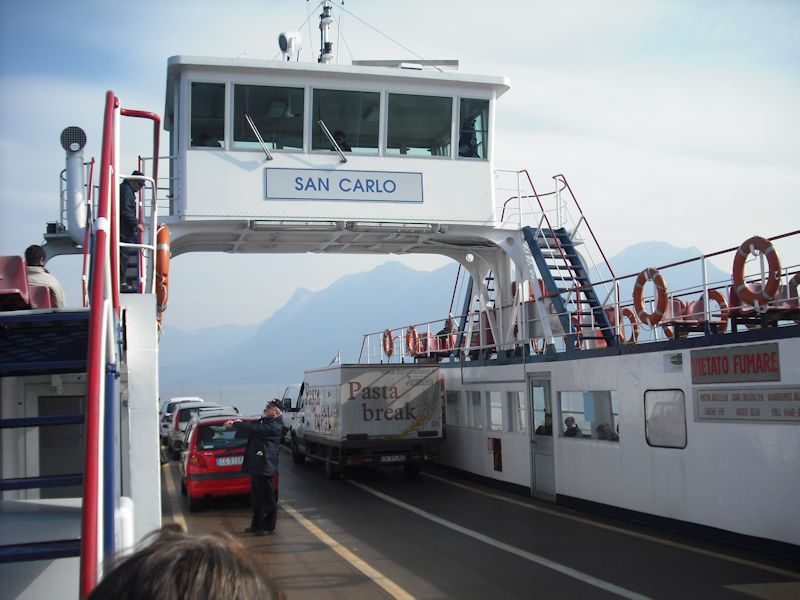
Just in time for the ferry from Verbania-Intra to Laveno. Some pasta would go down well right now.
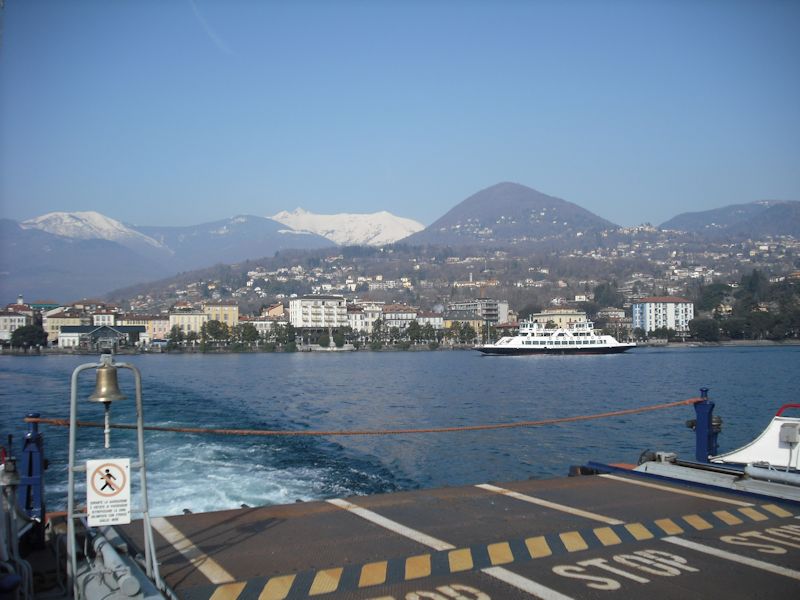
We're pulling away from the Intra docks, as another, somewhat more luxurious, ferry comes in. Swiss and Italian Alps in the background.
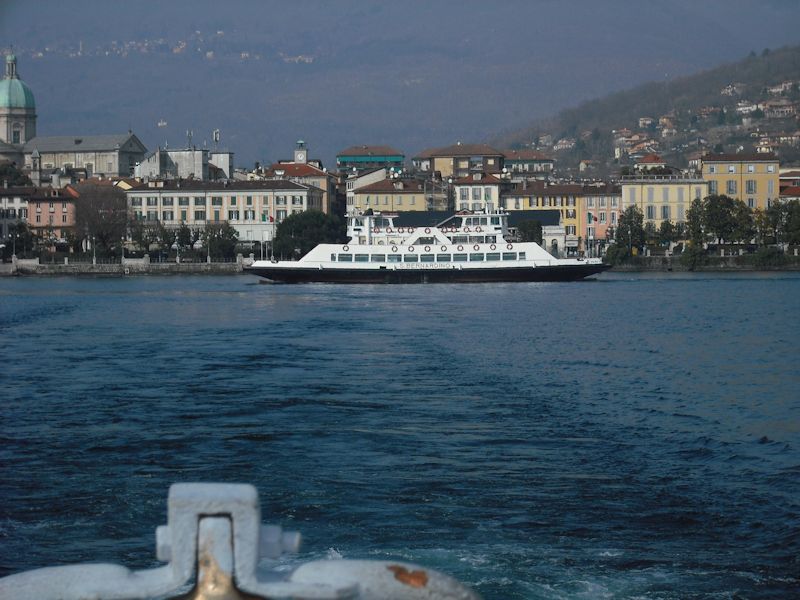
The San Bernardino at Intra
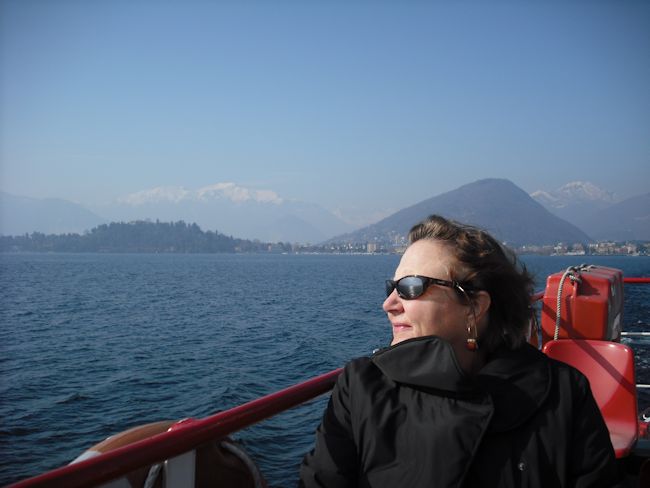
A tourist
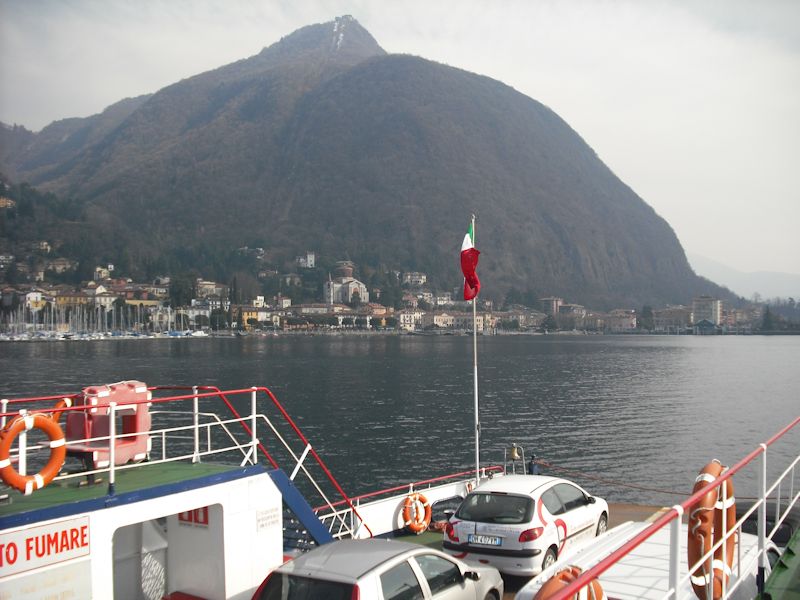
We're coming up to Laveno-Mombello now, just in time for lunch.

Laveno -- not terribly distinguished, we felt, but it's clean, and the ferry docks connect easily to the big road south to Varese and Milan. So that's good, if you've got a car, and you want to go to Varese or Milan. We'll just grab a quick lunch and a quick look around, and then adios.

That's our return boat coming in -- dash for the docks..

Among the joys of February tourism is that you get the sun deck all to yourself.
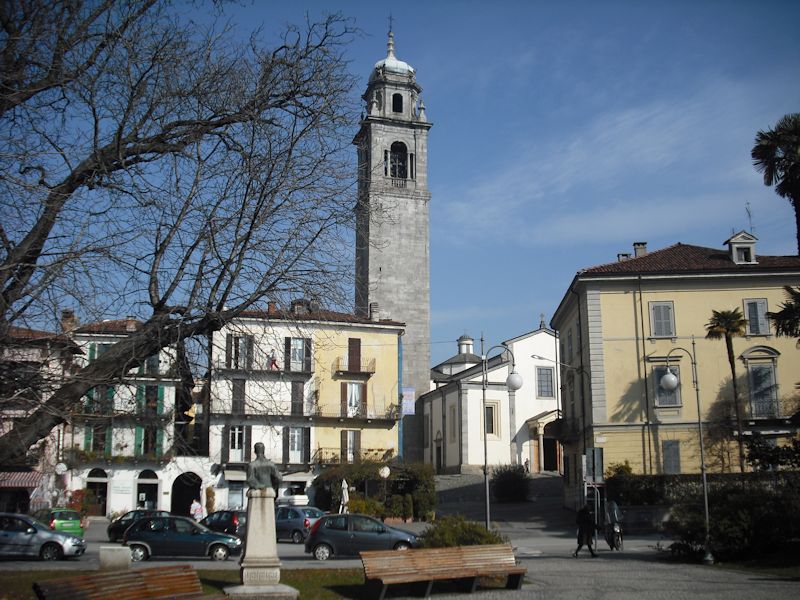
The 4-km walk back from Intra to Pallanza went off brilliantly, with a number of meditative pauses along the way.
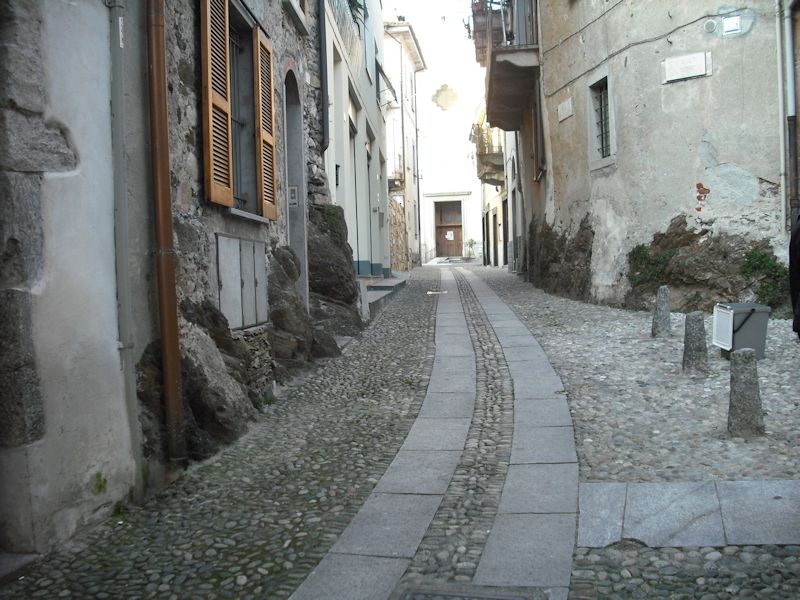
Explorations of Pallanza's streets leading up to the main square and bus depot. Houses built onto "living rock".
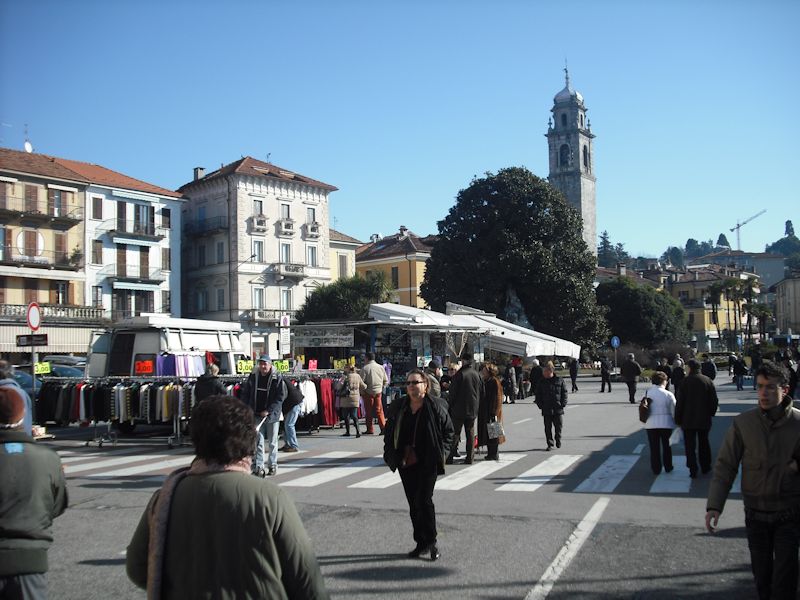
It's market day in Verbania-Pallanza. As at all street markets, we're required to have a hasty look round for those special objets d'art we've been searching for all these years. It usually doesn't take too long.

Nothing looked must-have here (except for the entire contents of the cheese wagon). Now we're going up to the bus stop in the main square to set off for some regional sightseeing.

Kids in the way. It's the carnevale season, and troops of wee ones are everywhere throwing confetti like Junior Anarchists.
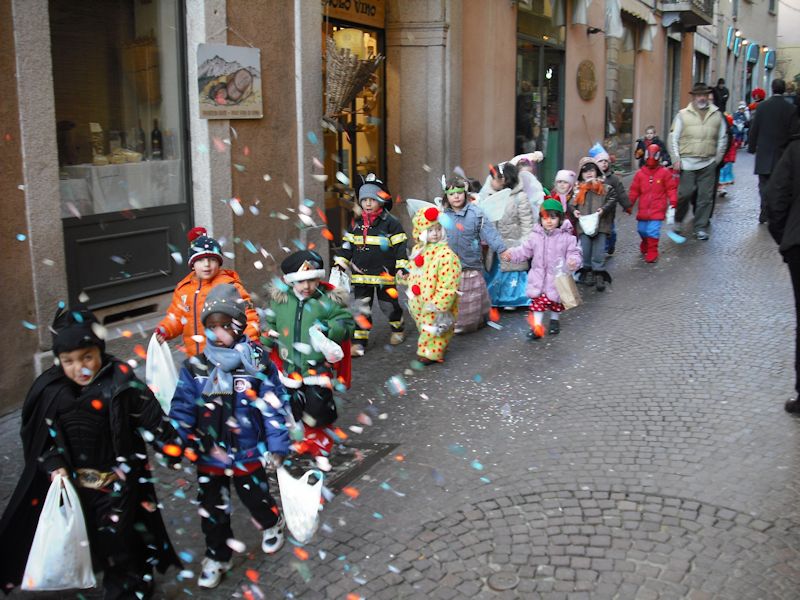
The Confetti Brigades
Omegna
We've come over the way by bus, from Verbania to Verbania rail station -- which is nowhere near Verbania -- and thence via Gravellona Toce over into the next valley to see Lake Orta again.
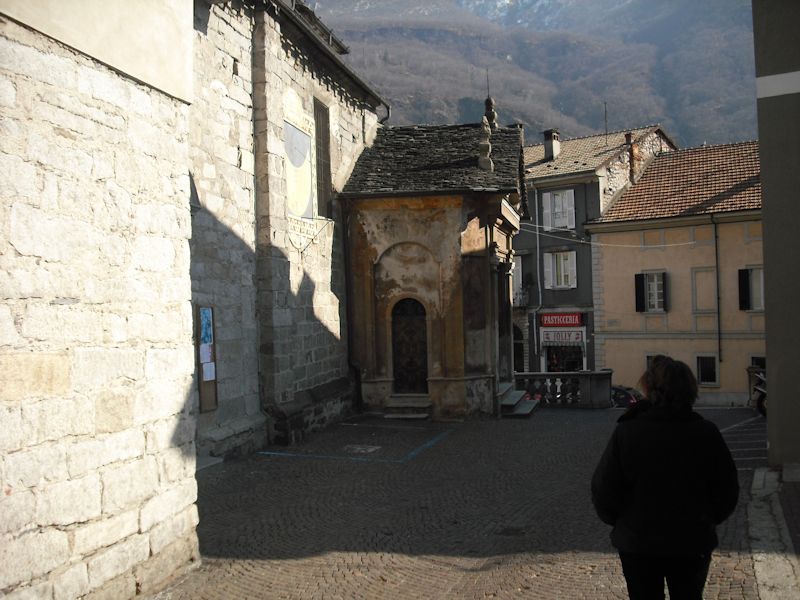
Now we've got off the bus in Omegna at the northern end of Lago d'Orta.
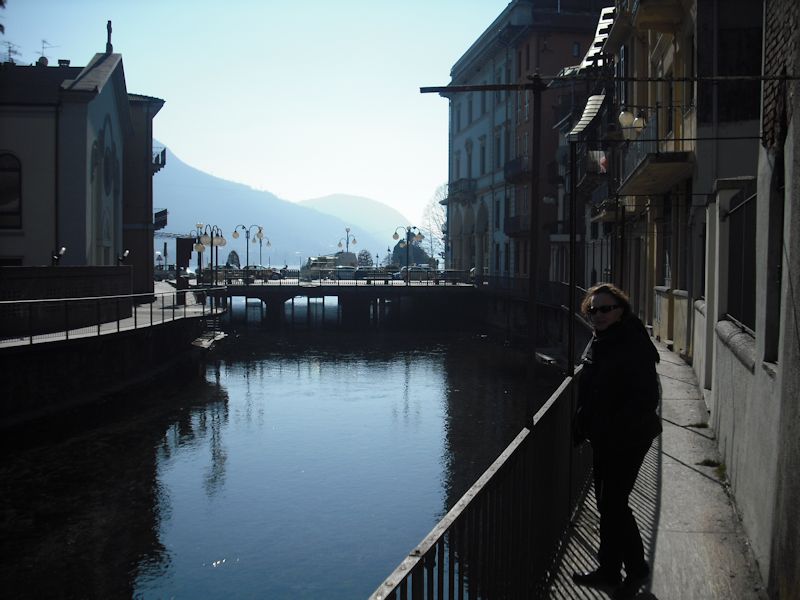
A very charming place it is. Like Venice.

I stayed in an hotel on the waterfront here some 30-odd years ago, but either it's gone now or my memory is.
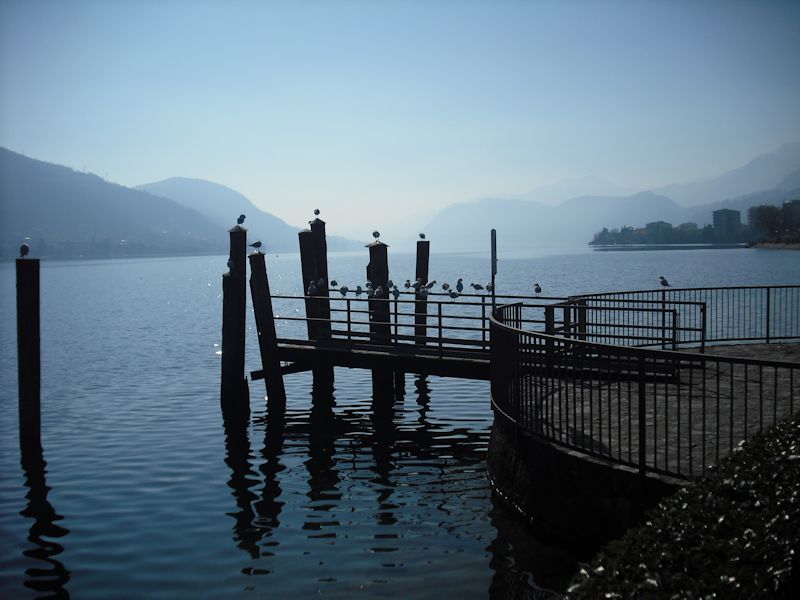
Looking southward from Omegna down Lake Orta. This whole region around the lake was heavily fortified from the 6th century onward, and it seems to have been historically tossed all about for the next millennium and a half between feudal lords and bishops of Novara and imperial heavyweights like Friedrich Barbarossa.
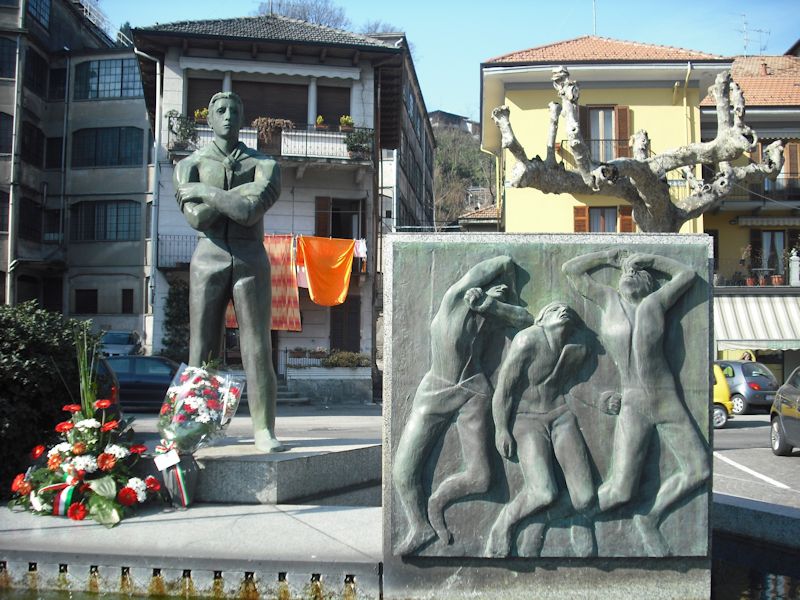
There is no explanatory plaque for this commemorative nightmare, and I have no guesses.
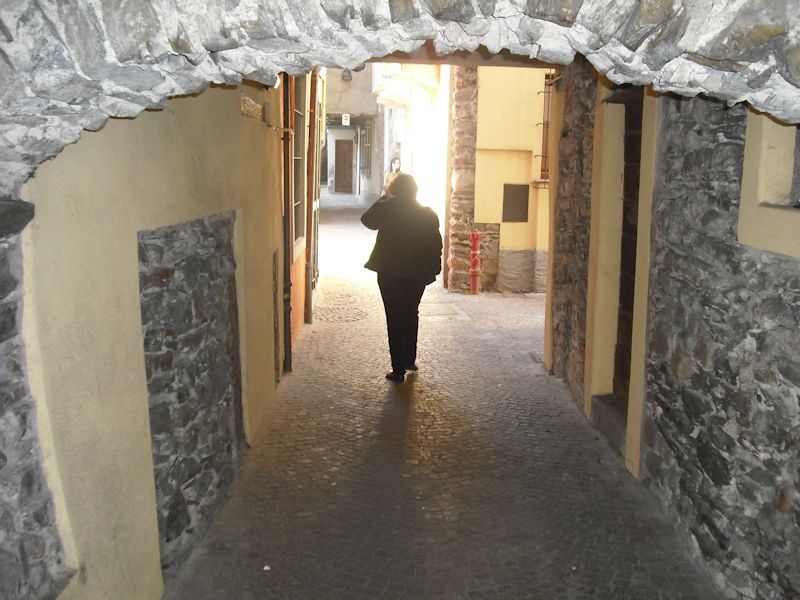
The back streets of Omegna
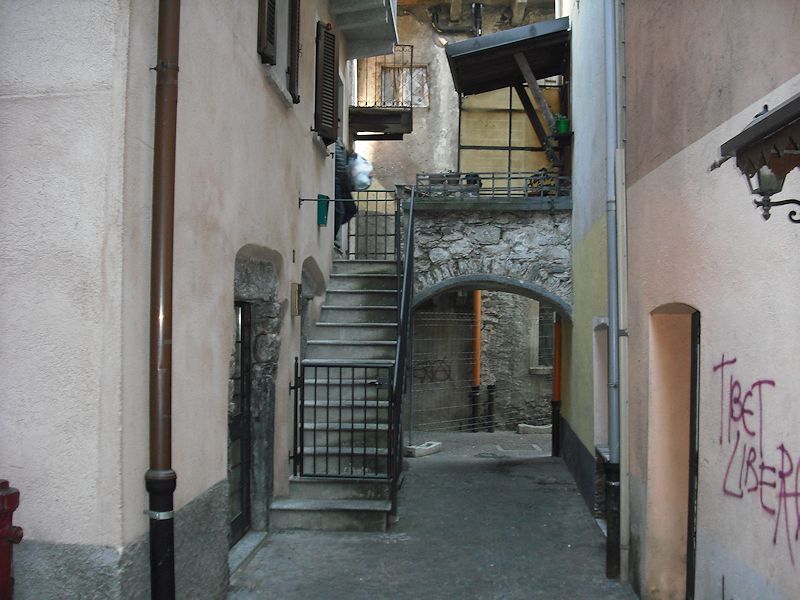
"Free Tibet"
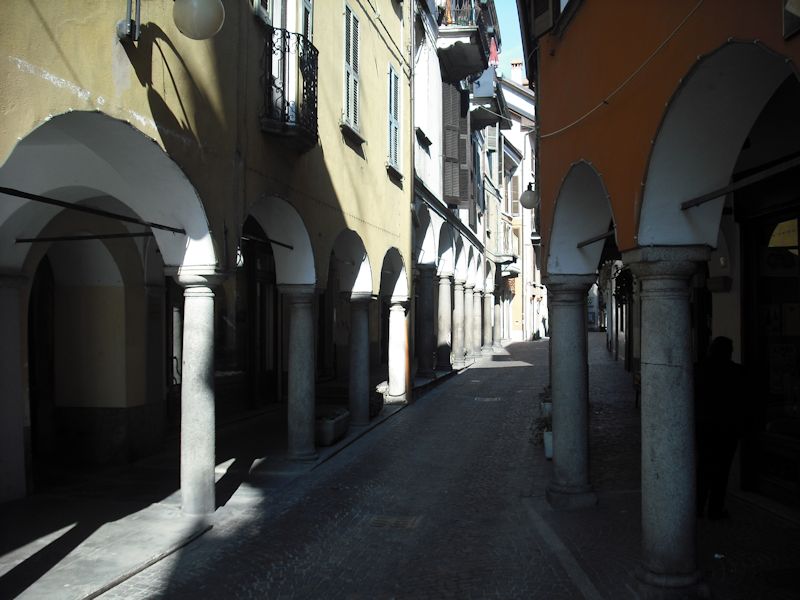
Old merchants' arcades along the historic town centre.
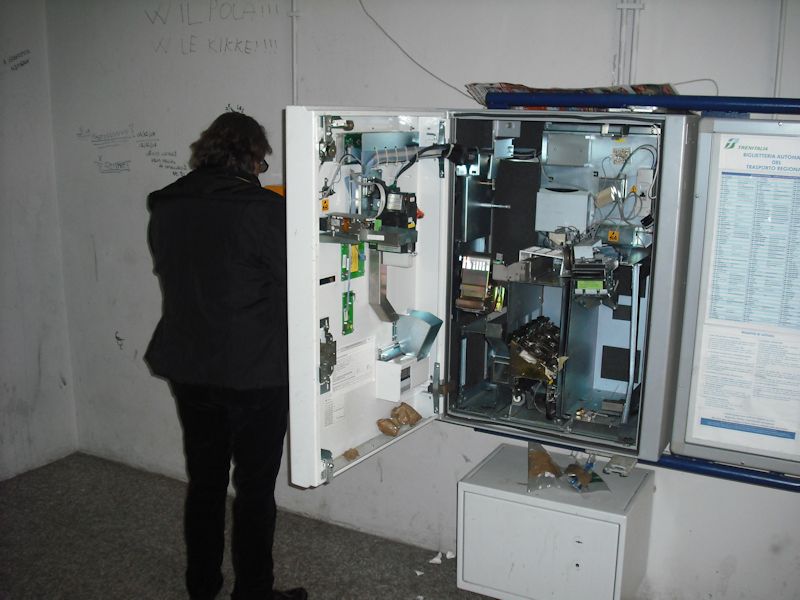
Kristin at work on the automatic ticket machine. We're going to take the train down the lakeside to Orta its ownself. [Additional views of Omegna from this trip]
Orta San Giulio
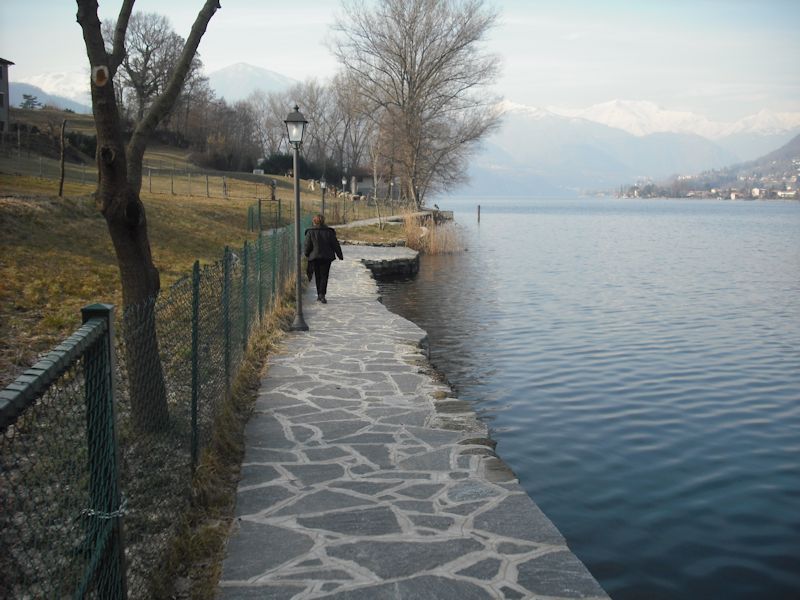
We've hiked down off the hillside from the Orta rail station and, luckily, found this brilliant coastal walk all round the peninsula of Orta San Giulio. The peninsula is dominated by the Sacro Monte in the centre of it, a big hill with 20 chapels built over it in a fit of touristic piety dating from the 1590s -- it's one of the nine Sacri Monti in the Piedmont and Lombardy regions that were accepted for inscription in the World Heritage list in 2003.
Historic chapels are all fine, but in the present circumstances one was glad to be able to walk round the Sacred Mountain rather than up over the top of it. We'll come back for the sacred stuff another time.
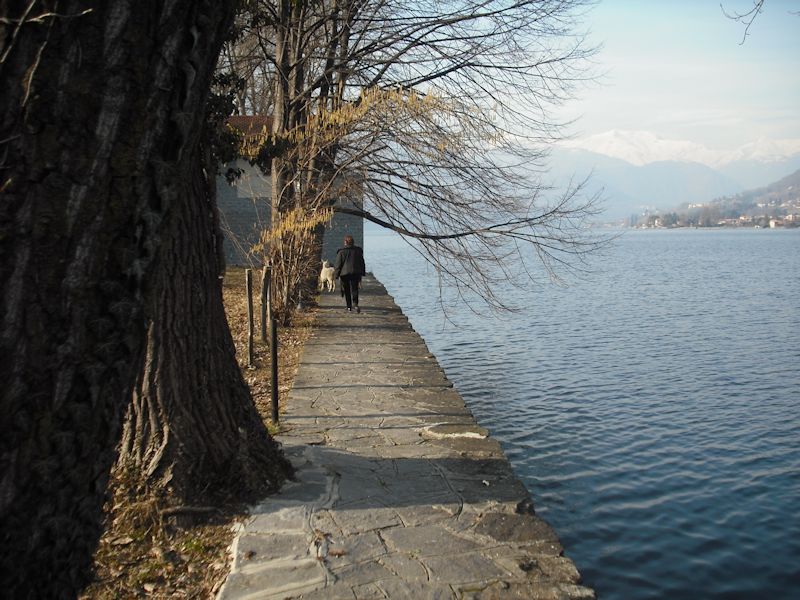
Sheep and goats. It's a headlong rush to get acquainted with the l'il darlings before they dart on up the Sacro Monte.

Kristin loves nothing so much as little sheep and goats. And marmots. And little pigs. (And kittens.)
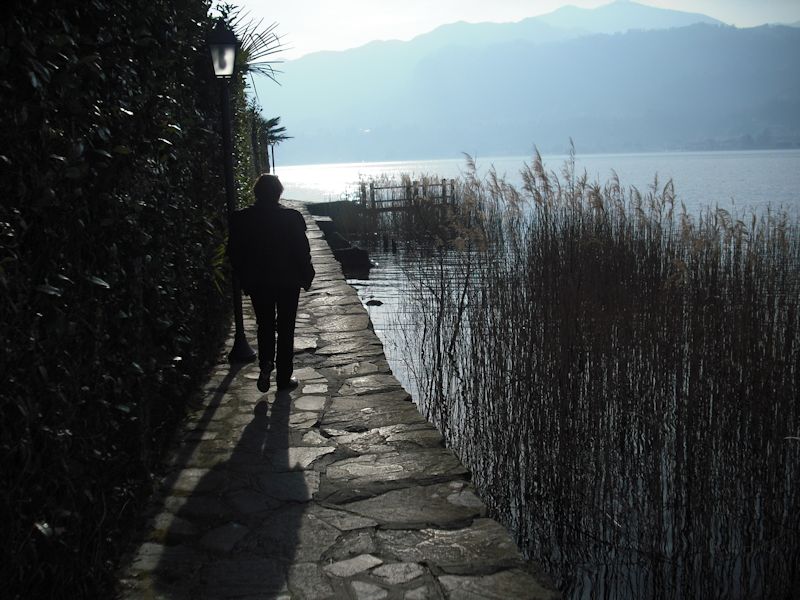
The fine coastal path runs all round the peninsula and into Orta town by the back door.

Into Orta stealthily
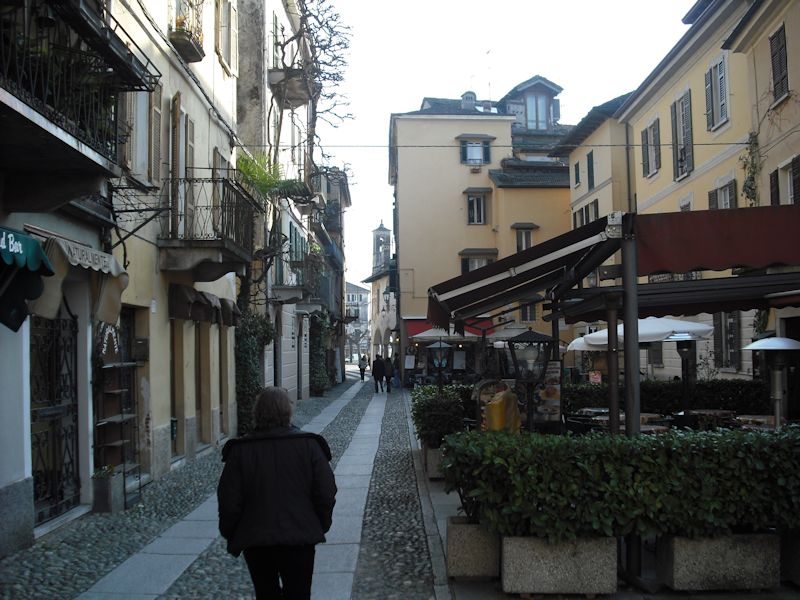
We're taking in the wonderful sights and looking for a news agent who's got the International Herald Tribune. We've tried about ten already, in all the towns along the way, but perhaps we'll get lucky on number eleven, the shop on the right.
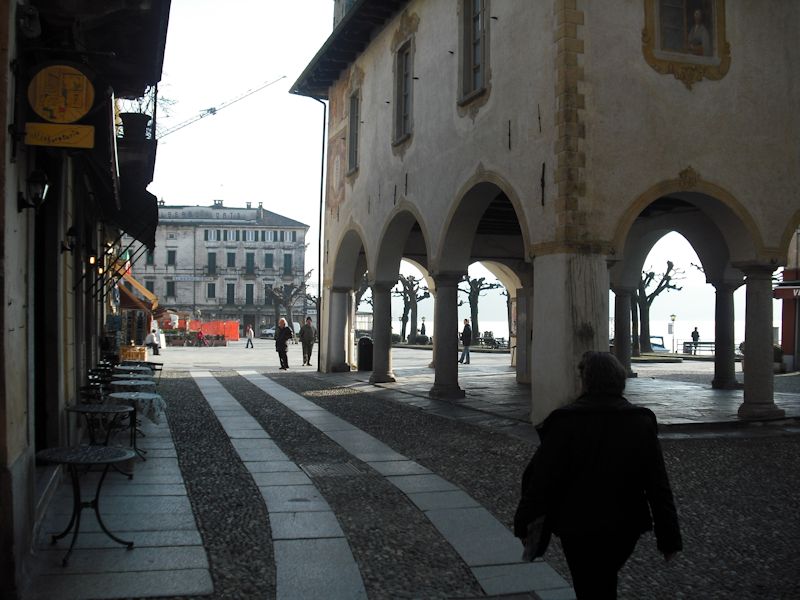
Approaching downtown Orta San Giulio, the main piazza, with our new International Herald Tribune exultantly tucked under our arm.

The old plaza. Ever so slightly fatigued by our hike from the station, we draw up a pleasant park bench and share out the pages of our International Herald Tribune. Déja vu. It turned out to be yesterday's. We could recite half the articles off by heart.

The Palazotto, the compact frescoed 16th century town hall, dominates the main piazza on the waterfront.
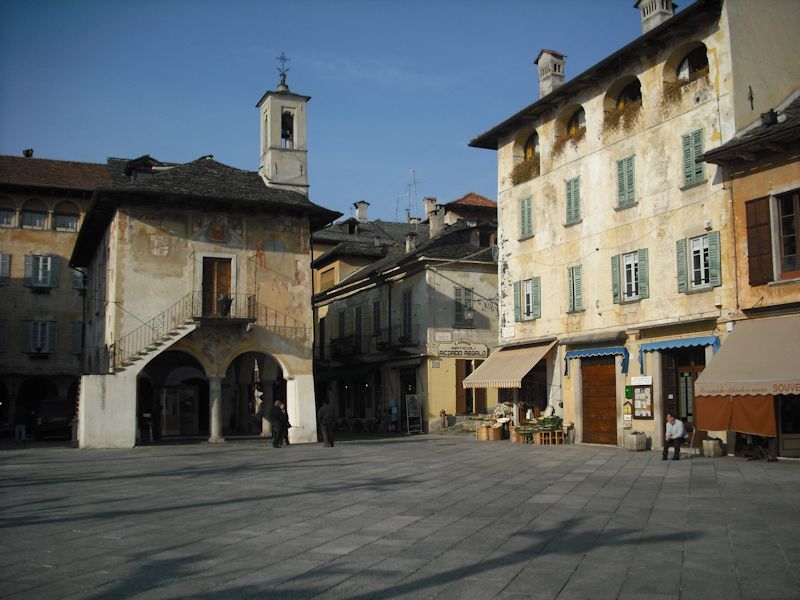
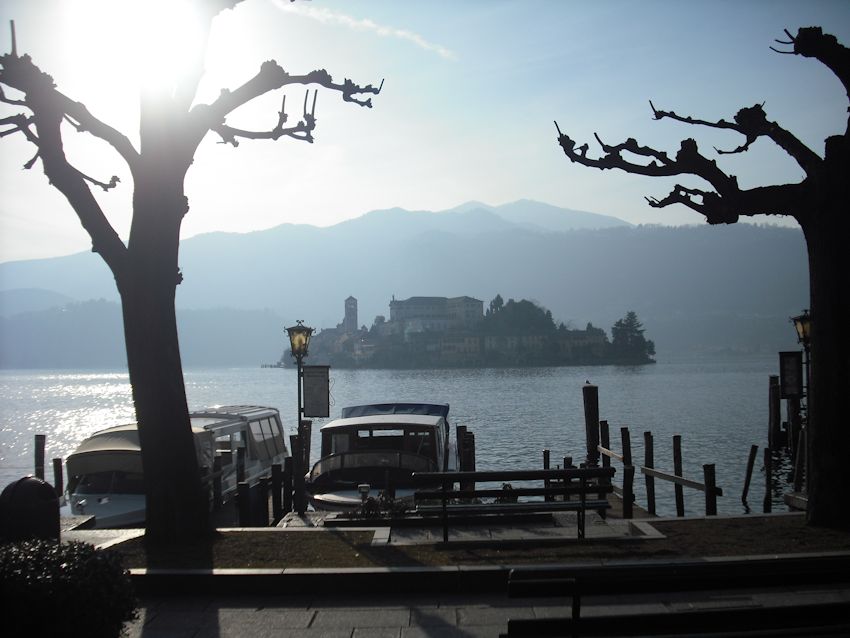
The Isola San Giulio just across the way. The basilica was founded by St Giulio (St Julius of Novara) in 390 (he had to defeat a sea serpent first) and then largely rebuilt after the siege of 956-962.

Kristin checking for a more recent International Herald Tribune. Nope.
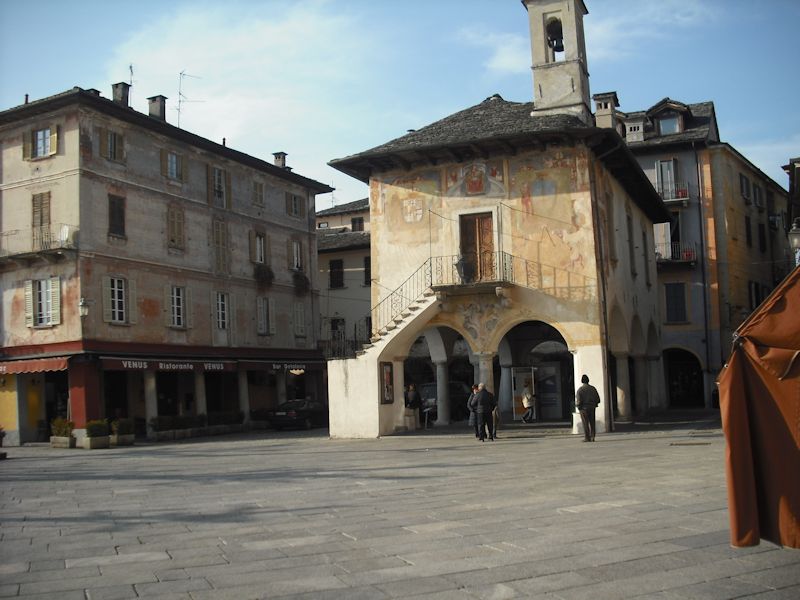
A last view of the piazza. It's time to start the walk back to the rail station -- bound for the last bus out of Omegna for the day.
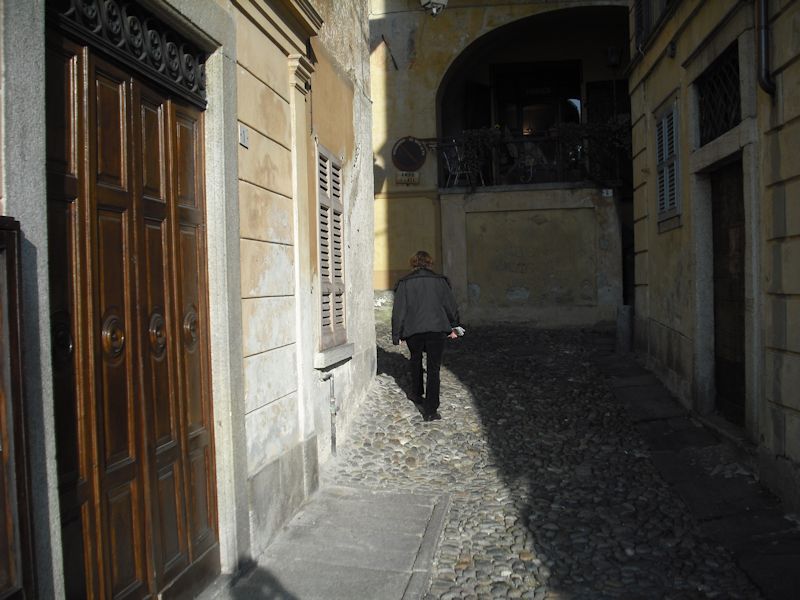
Kristin already on her way
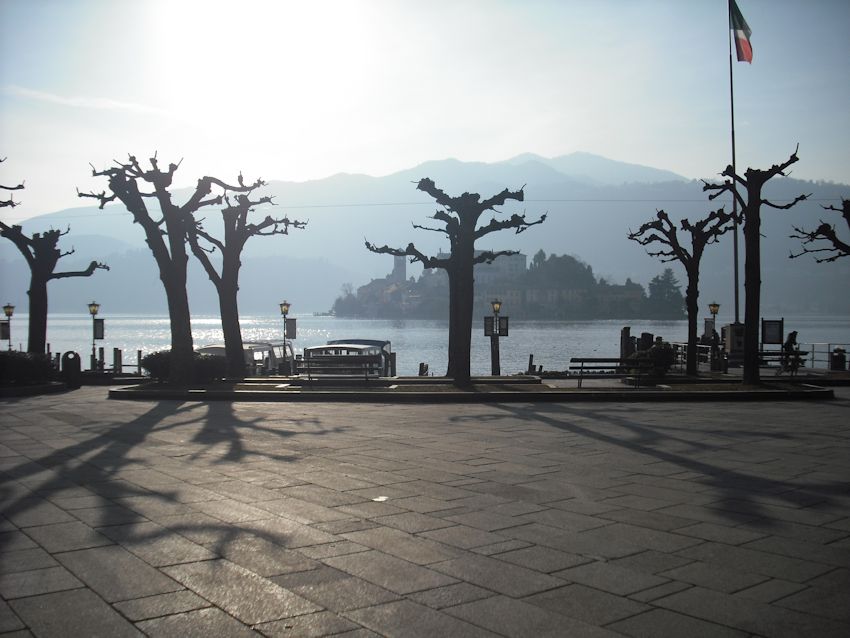
We're leaving reluctantly -- a last view of the island.
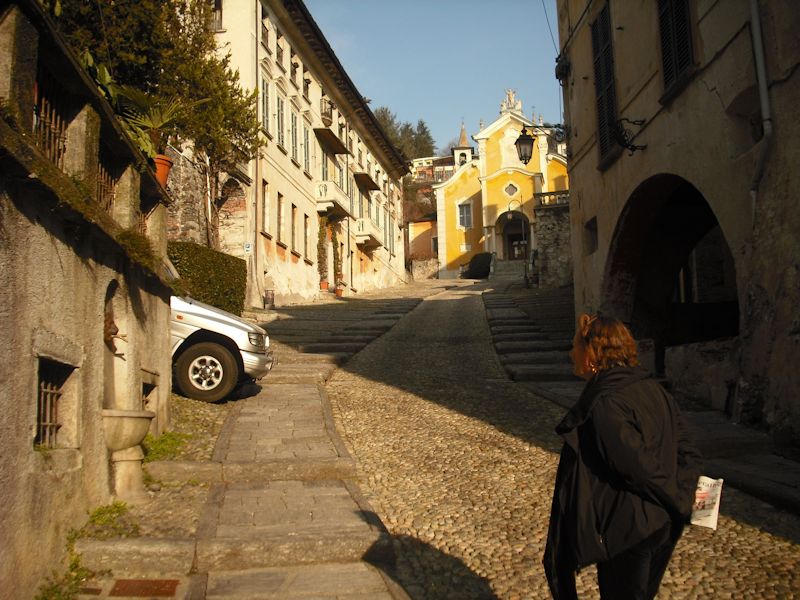
Marching up the Sacred Mountain. And soon, marching up to the Sacred Railway Station.
Stresa and the Borromeo islands

Today we're going across the lake to visit Stresa and whatever else may seem good to us at the time.
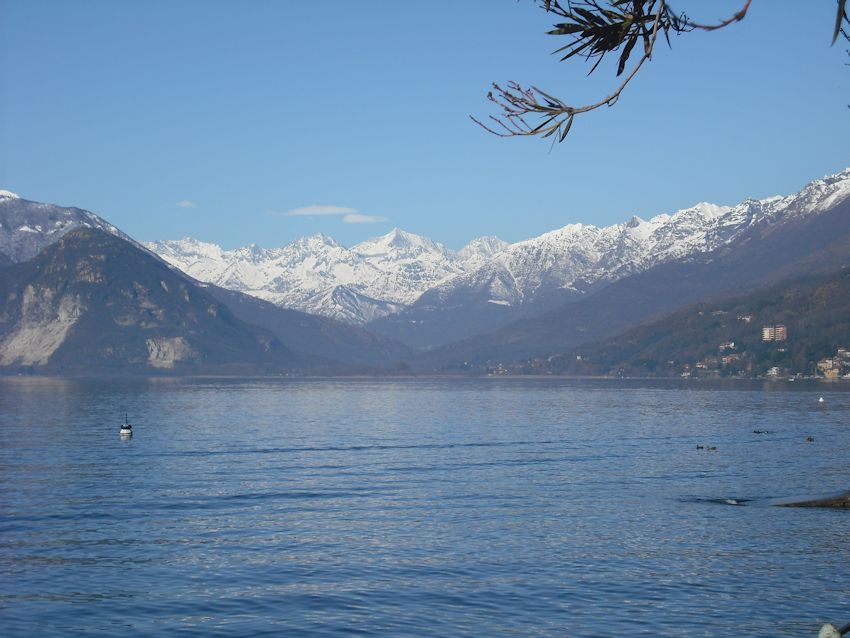
The end of the lake, Domodossola up the valley a ways, and the Swiss Alps.
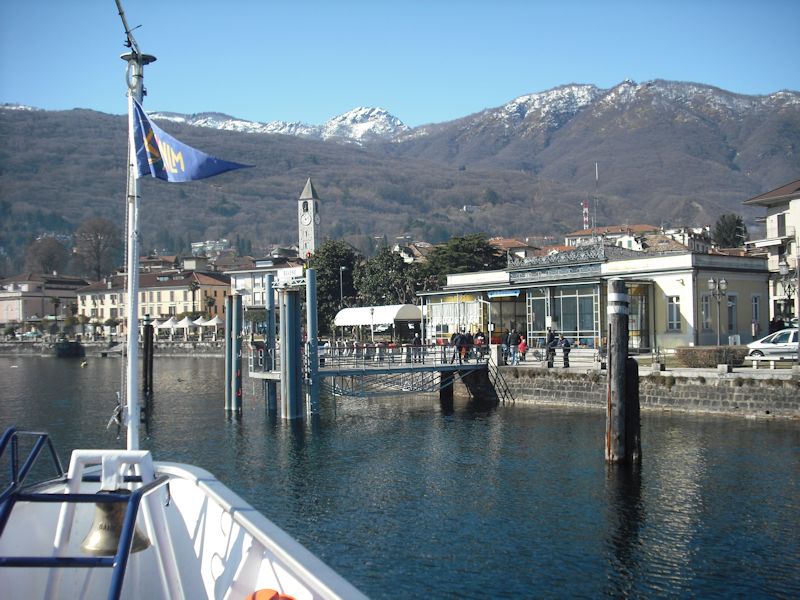
Baveno on the far side of the lake. We whisked right by the Isola Madre, the nearest of the Borromeo Islands to the Verbania side, because it's closed for the winter.
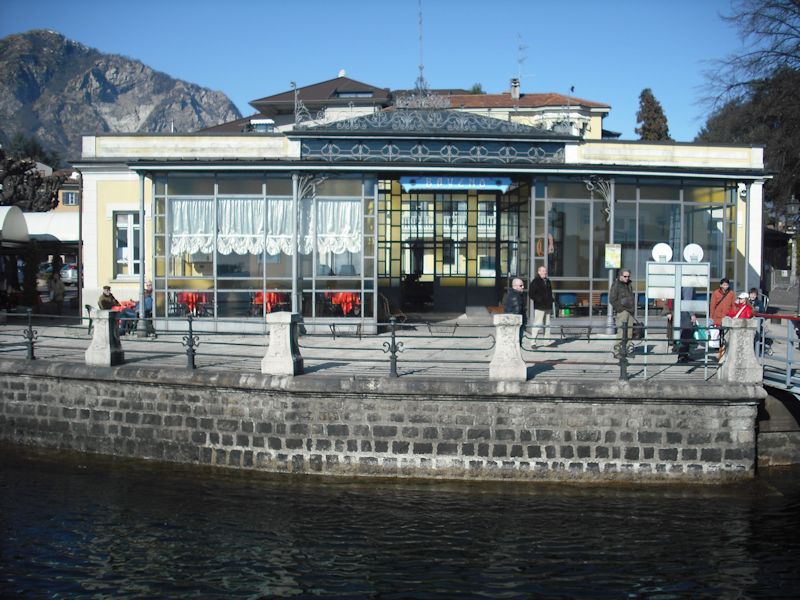
After a brief stop here to pick up the mail, we're headed for the other Borromeos.

Like the Isola dei Pescatori, or fishermen's island. Pescatori, also called Isole Superiore, has 50 year-round residents, but a lot of the tourist workforce seemed to be on this boat with us at the end of the day, headed back to Baveno or Stresa with a continuing sense of a job well done.
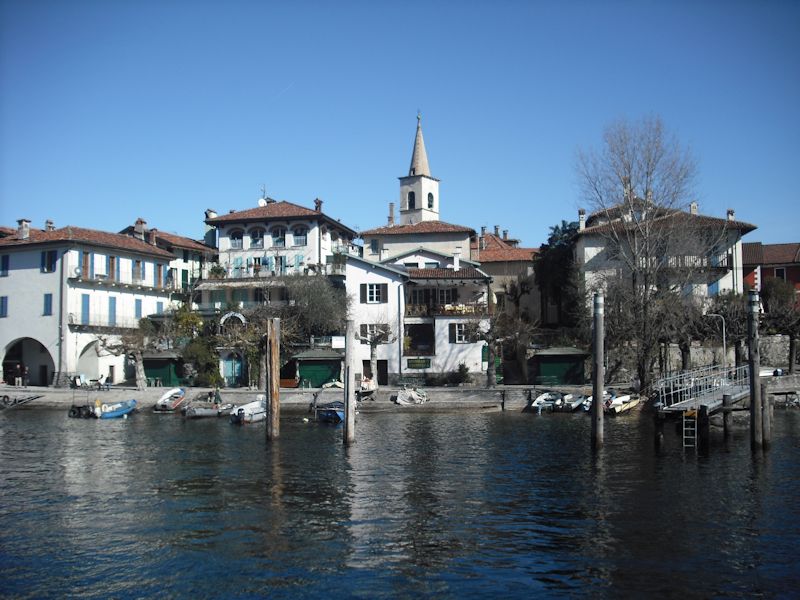
350m long, incredibly charming and 16th century-ish, crowded in summer
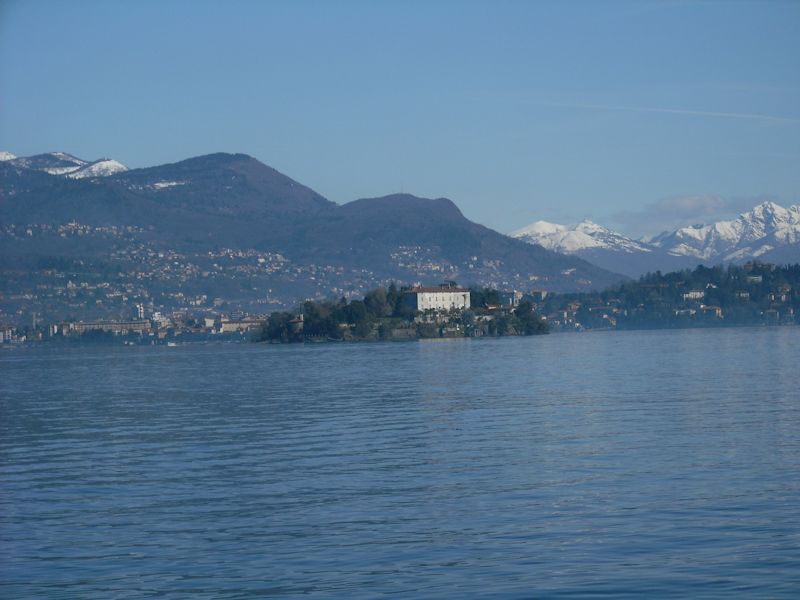
A look back at the Borromeo palace on Isola Madre, with Verbania-Pallanza on the shoreline behind, and the Villa Taranto on its hilltop on the far right
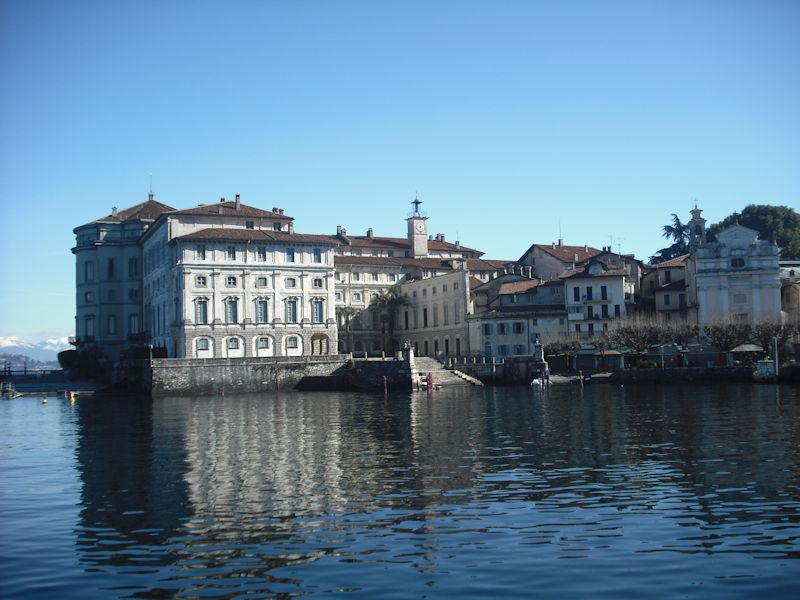
The third Borromean island, Isola Bella
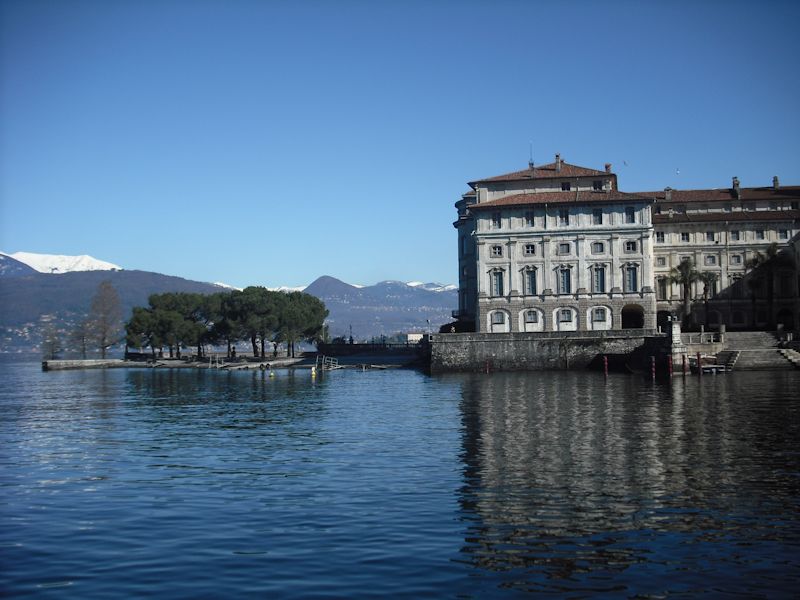
Isola Bella, 320 meters long and 400 meters off the coast of Stresa, is entirely taken up by the 17th century Palazzo Borromeo and its enormous gardens.
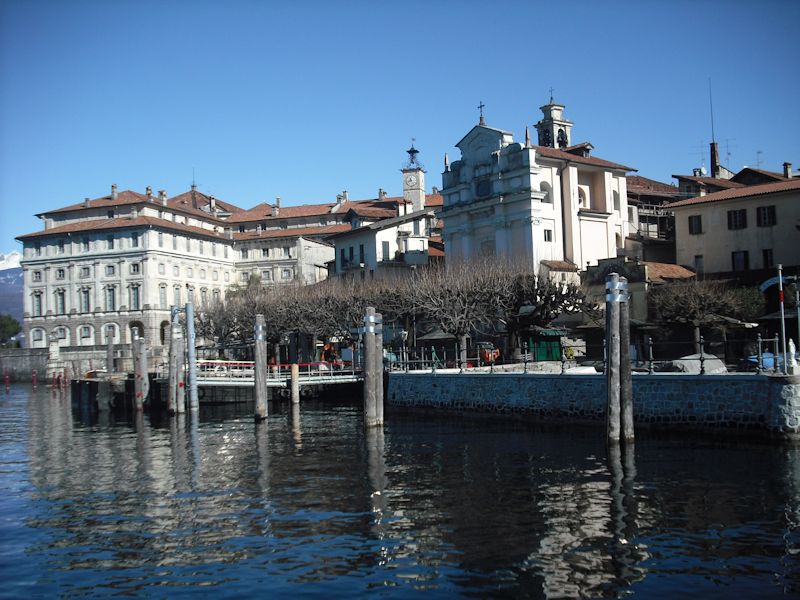
What a cleaning bill.

Some of the gardens of the Palazzo Borromeo
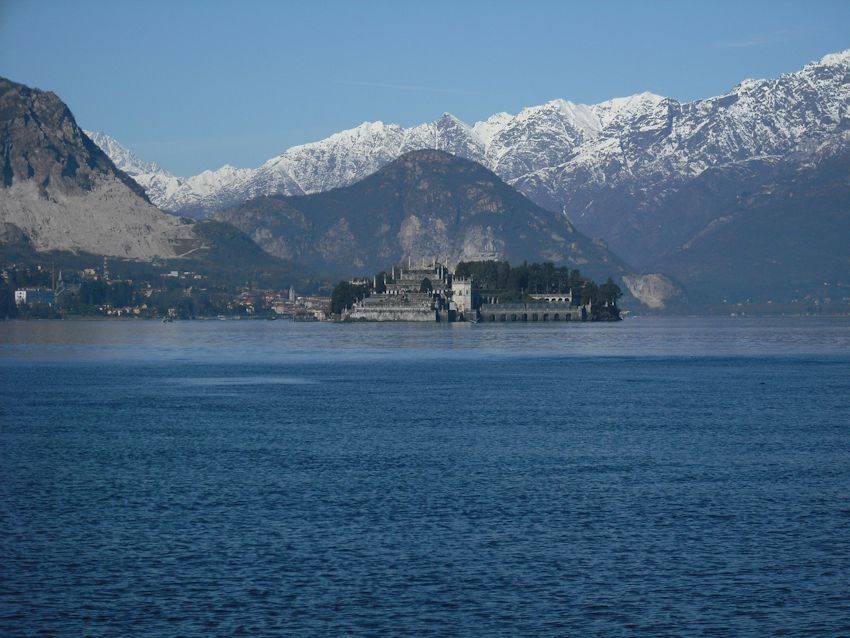
And the gardens again, as our cute little boat pulls into the docks at Stresa
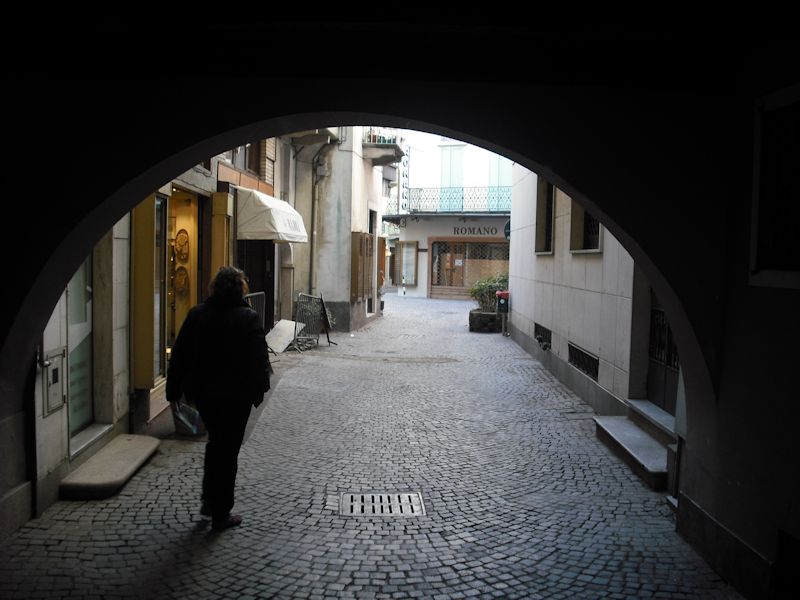
Kristin in Stresa. Not much to see here, within our fairly limited walking range at the moment, so we're hopping on a bus for Arona to the south.
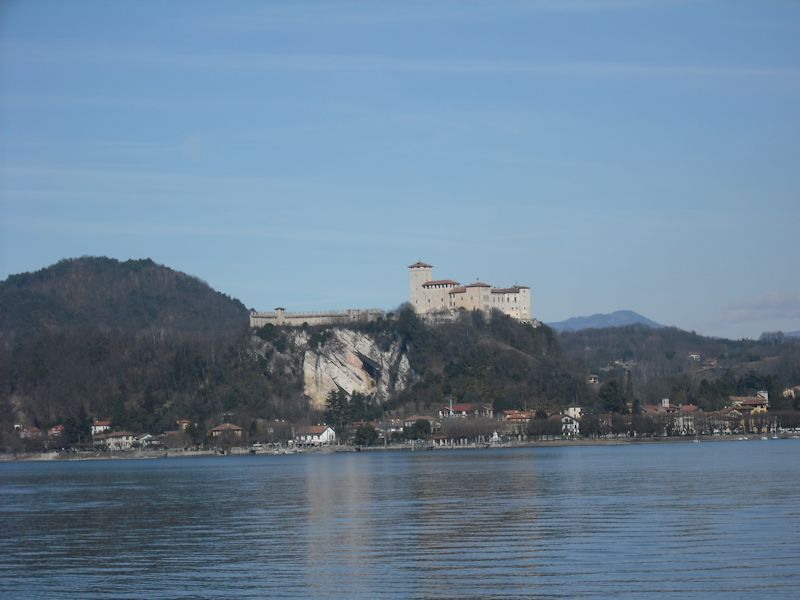
Along the southern arm of the lake, across from Arona, that's the 12th-13th century fortress called the Rocca di Angera, or more commonly the Rocca Borromeo.

We're making a leisurely exploration of the waterfront of Arona, with a little stop for an exhibition of 16th and 17th century engravings by all sorts of famous masters and another little stop for a slice of pizza, and thence back by rail to Stresa . . .
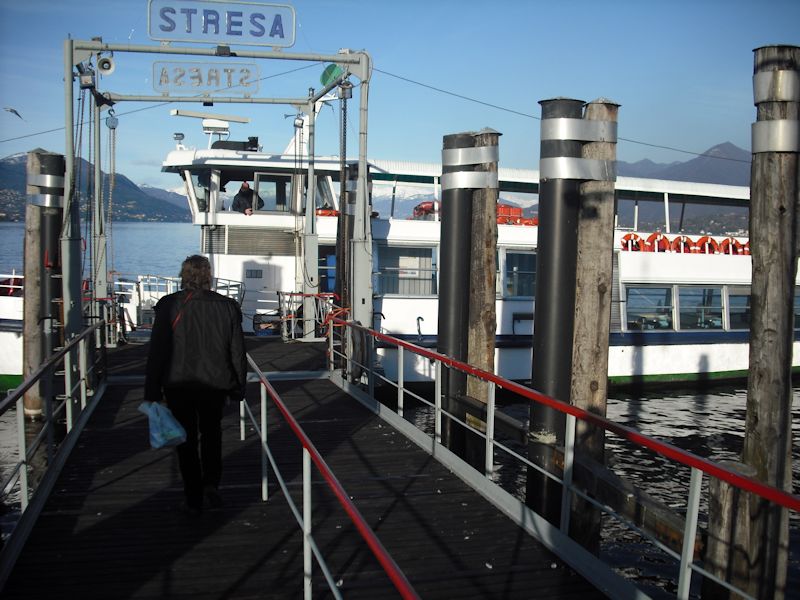
. . . and thence back by boat to Verbania for dinner.
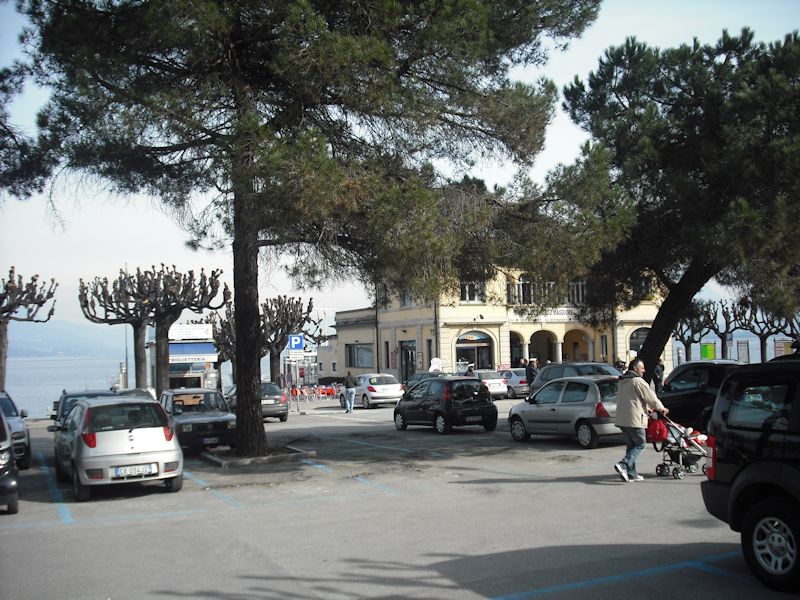
And then, before you know it, back by boat to Stresa again the next day to catch the train back to Switzerland.
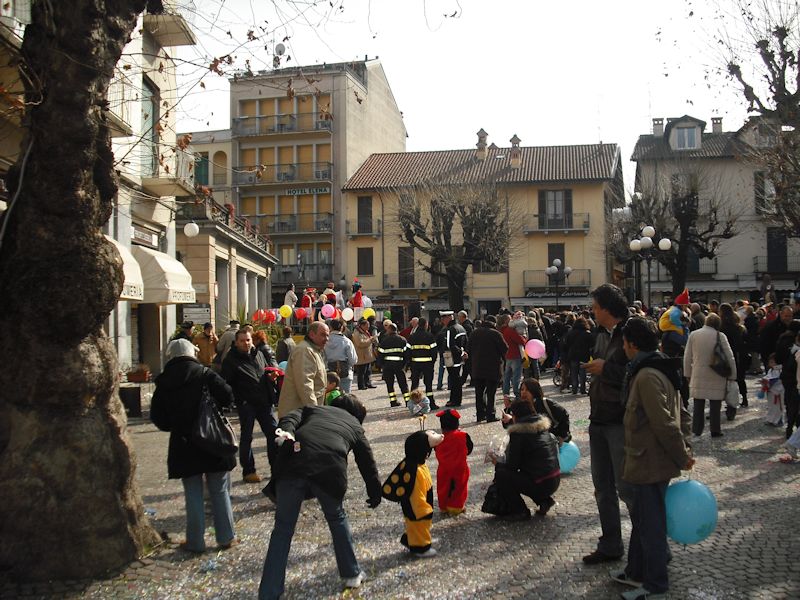
Between the embarcadère and the train station, we're passing the carnevale in full confetti mode.
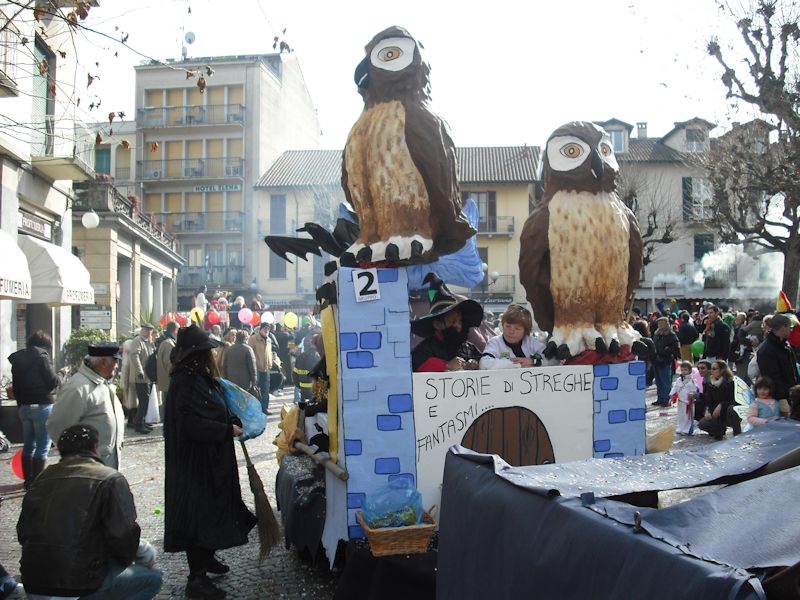
With witches and kids, and dignitaries in medieval kit, and an Elvis impersonator whom we did not wait to see.

Despite the imaginative preparations, it was not the crazed and drunken delirium that we associate with carnevale in some European cities. But, of course, this was on a Sunday morning.
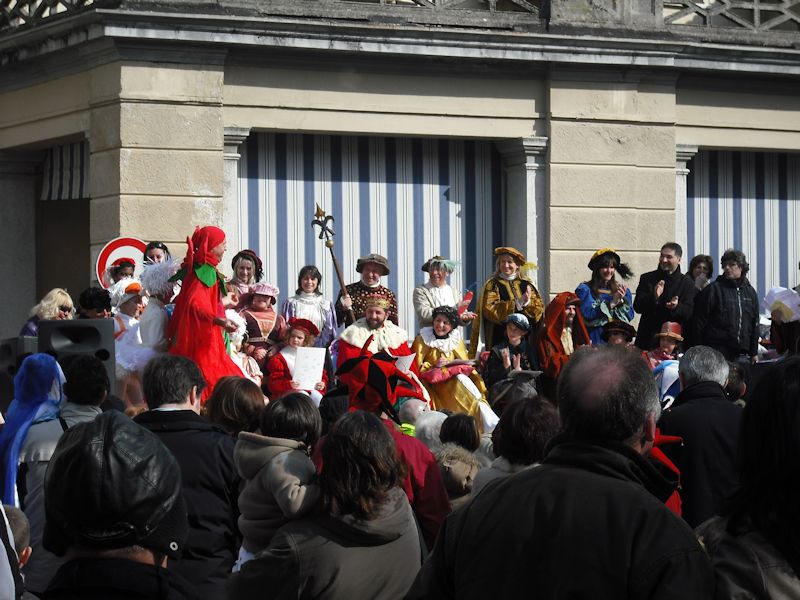
Civic hilarities, just before the fanfare (marching band) struck up the oompah clatter and we had to clear out.
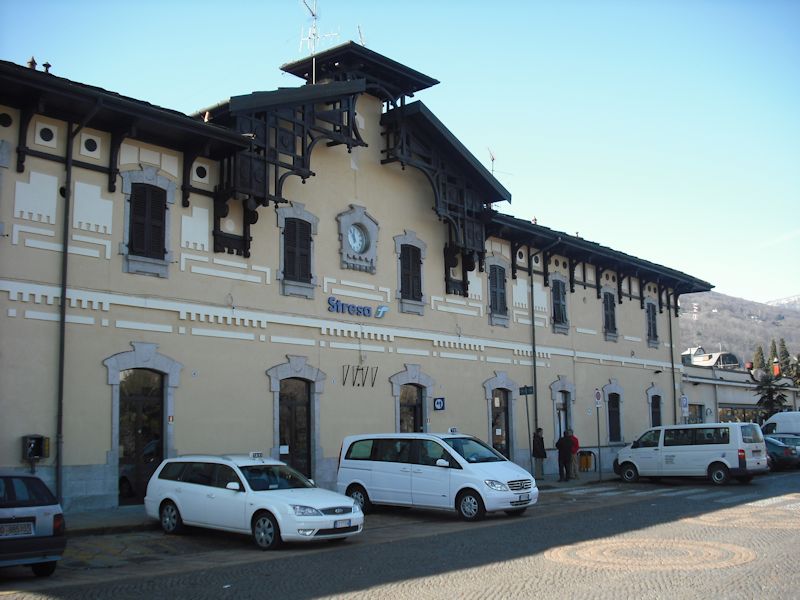
The Stresa rail station, as we're off on our fairly inexpensive glide on the InterCity back via Domodossola, Brig (to find a snowstorm in progress), Sierre, Sion, and Lausanne to lovely Gland, where Dieter the Volkswagen has been awaiting us attentively. An interesting, unexciting, and not too taxing five-day vacation that was just what the doctor ordered.